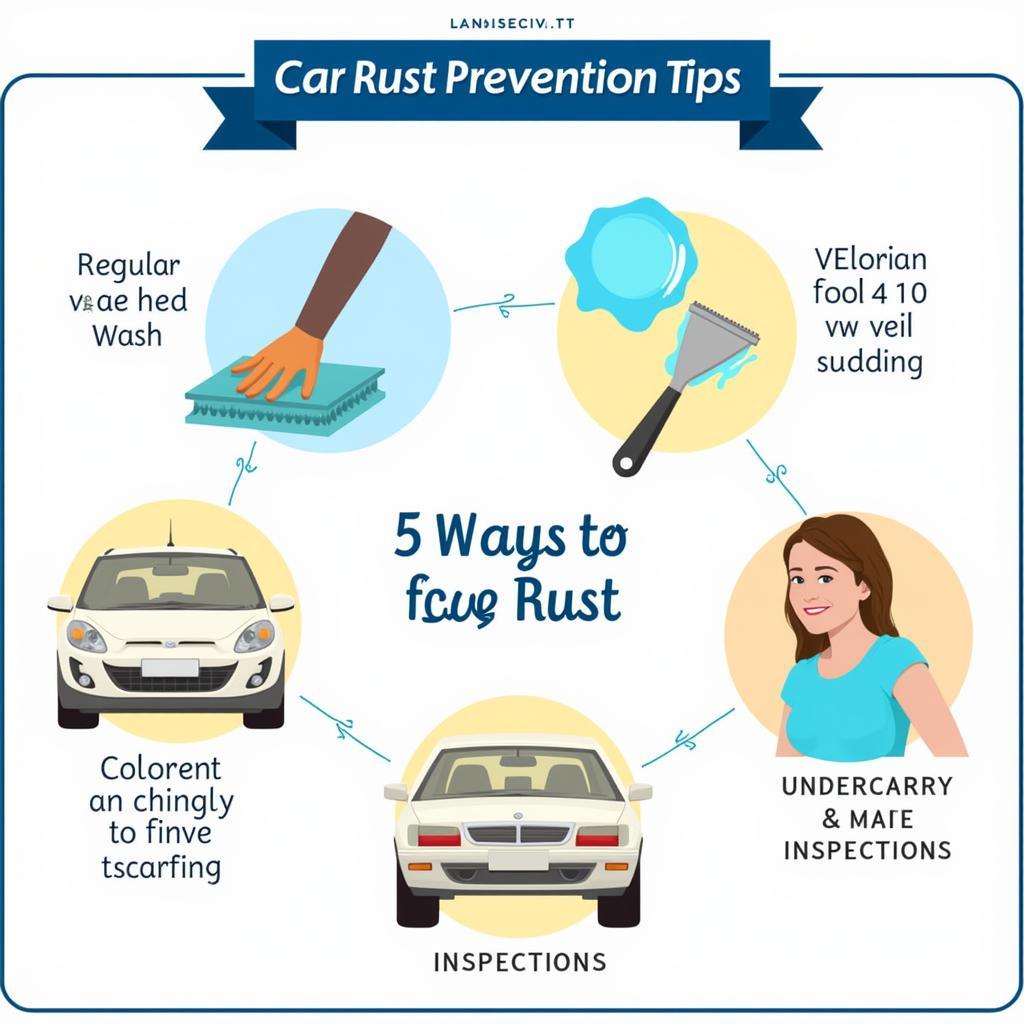Rust is the bane of any car owner’s existence. It’s unsightly, weakens the car’s structure, and can ultimately lead to costly repairs. Fixing Car Rust With Fiberglass is a popular and effective method, offering a durable and cost-effective solution for minor to moderate rust damage. This guide will delve into the process, providing a step-by-step approach and expert insights to help you achieve professional-looking results. After reading our how to fix large rust holes in car article, now we can look at how to use fiberglass.
If your car skirt is loose, you should check out how to fix a loose car skirt.
Understanding the Rust Repair Process with Fiberglass
Before diving into the how-to, it’s essential to understand why fiberglass works so well for rust repair. Fiberglass, a composite material made of glass fibers embedded in a resin, provides exceptional strength and durability. It’s resistant to moisture, chemicals, and temperature fluctuations, making it an ideal solution for patching rusted areas and preventing further corrosion. Unlike metal patching, which can be susceptible to further rusting, fiberglass offers a long-term solution when applied correctly.
 Fiberglass Car Rust Repair Process
Fiberglass Car Rust Repair Process
Preparing the Rusted Area
Proper preparation is crucial for a successful fiberglass repair. First, you need to thoroughly clean the rusted area. Remove any loose rust, paint, and debris using a wire brush, sandpaper, or a grinding wheel. This will ensure proper adhesion of the fiberglass resin to the metal. Next, use a rust converter to treat any remaining rust and prevent further corrosion. Once the rust converter has dried, mask off the surrounding area to protect it from resin splatter.
Do you know how to fix a damaged car roof? It’s an important skill to have.
Applying the Fiberglass
Mix the fiberglass resin and hardener according to the manufacturer’s instructions. Apply a thin layer of resin to the prepared area. Then, carefully lay the fiberglass mat over the resin, ensuring it conforms to the shape of the repair area. Apply another layer of resin over the mat, saturating it completely. Repeat this process, layering the fiberglass mat and resin, until you’ve built up sufficient thickness to match the surrounding metal.
 Applying Fiberglass Mat and Resin to Car Rust
Applying Fiberglass Mat and Resin to Car Rust
Shaping and Finishing
Once the resin has cured, use sandpaper or a grinding wheel to shape the fiberglass patch and blend it seamlessly with the surrounding metal. Start with coarser grit sandpaper and gradually move to finer grits for a smooth finish. Once you’re satisfied with the shape, apply a layer of body filler to fill any remaining imperfections and create a perfectly smooth surface. Finally, prime and paint the repaired area to match the rest of the car.
You can find useful information on fixing car bumper costs on our website.
Why Choose Fiberglass for Rust Repair?
“Fiberglass is a versatile and effective solution for many car rust repairs,” says John Miller, Automotive Engineer at Rust-B-Gone Solutions. “Its strength, durability, and resistance to further corrosion make it a superior choice compared to traditional metal patching in many cases.” He further adds, “Proper surface preparation and application are key to achieving long-lasting results.”
 Finished Fiberglass Rust Repair on Car
Finished Fiberglass Rust Repair on Car
Knowing how to fix a big hole bottom of car can save you a lot of money.
Preventing Future Rust
Preventing rust is always better than treating it. Regularly washing and waxing your car can help protect the paint and prevent rust from forming. Addressing minor scratches and chips promptly can also prevent rust from taking hold. “Regular inspections, especially in areas prone to rust, like wheel wells and undercarriage, can help catch rust early and prevent it from spreading,” adds Maria Sanchez, Automotive Technician at Precision Auto Care. This proactive approach can save you significant time and money in the long run.
Conclusion
Fixing car rust with fiberglass offers a DIY-friendly and cost-effective way to restore your car’s appearance and structural integrity. By following these steps and taking preventative measures, you can keep your car rust-free for years to come. For further assistance or personalized advice, feel free to contact AutoTipPro at +1 (641) 206-8880 or visit our office located at 500 N St Mary’s St, San Antonio, TX 78205, United States.
 Car Rust Prevention Tips and Maintenance
Car Rust Prevention Tips and Maintenance
FAQ
-
How long does a fiberglass rust repair last? With proper preparation and application, a fiberglass rust repair can last for several years.
-
Is fiberglassing a car rust repair difficult? While it requires some skill and patience, fiberglassing is a DIY-friendly repair for minor to moderate rust damage.
-
What are the alternatives to fiberglass for car rust repair? Alternatives include metal patching, which requires welding, and replacing the entire rusted panel.
-
Can I use fiberglass on heavily rusted areas? For severe rust, it’s best to consult a professional, as structural integrity might be compromised.
-
What type of fiberglass resin should I use for car repair? Use a resin specifically designed for automotive applications.
-
How long does it take for fiberglass resin to cure? Curing times vary depending on the resin and hardener used, but it typically takes a few hours.
-
What safety precautions should I take when working with fiberglass resin? Wear gloves, eye protection, and a respirator to avoid skin irritation and inhalation of fumes.





Leave a Reply